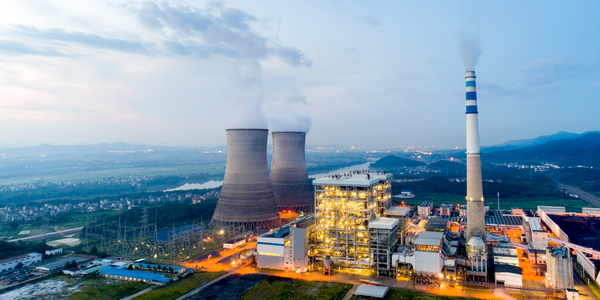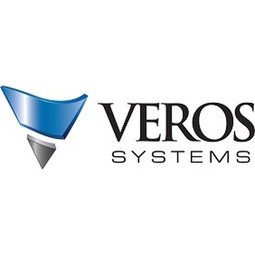下载PDF
Planned Maintenance for Power Generating Company

技术
- 功能应用 - 远程监控系统
- 传感器 - 振动传感器
- 传感器 - 电压传感器
适用行业
- 公用事业
适用功能
- 维护
用例
- 机器状态监测
挑战
在整个春末、夏季和初秋的几个月中,多机组发电厂没有计划外停电,这在德克萨斯州炎热的天气中具有挑战性。这几个月的意外停电可能意味着必须以现货市场价格购买替代电力,而这可能会在停电期间飙升。了解电厂设备过载的时间和时间是运营策略的重要组成部分。操作员需要准确估计电机驱动泵和风扇的负载水平以确定操作限制。
客户
NRG能源
关于客户
NRG Energy 的各种发电设施的容量约为 47,000 兆瓦,能够支持近 4000 万户家庭。他们的零售电力供应商——Reliant、Green Mountain Energy Company 和 Energy Plus——以及
解决方案
NRG 安装了 Veros ForeSight,以连续监测德克萨斯州汤普森市 WA Parrish 工厂 5 号机组的 10 个电机驱动离心泵和 4 个电机驱动风扇;休斯顿西南的一座九单元发电厂。电机的额定功率范围为 1,000 hp 至 4,000 hp,电机额定电压为 4,160 V 和 6,900 V。被监控的电机总功率为 31,500 hp。安装 Veros ForeSight 后,系统检测到 4,160V、1,000 hp 电机驱动的锅炉给水增压泵出现故障。 NRG 使用手持式振动监测器来证实这个问题。 ForeSight 系统的警报阈值设置为 2 密耳等效振动。在几个月内,振动水平达到 3 密耳,然后是 4 密耳,很快达到 9 密耳。每周振动路线跟踪 ForeSight 系统趋势。 NRG 使用计划停机来更换电机和泵。根本原因被确定为损坏了电机和泵的螺栓断裂和电机底座松动。
收集的数据
Downtime, Fault Detection, Operating Cost, Operation Performance, Power Supply Voltage
运营影响
相关案例.

Case Study
IoT Solutions for Smart City | Internet of Things Case Study
There were several challenges faced: It is challenging to build an appliance that can withstand a wide range of voltage fluctuations from as low at 90v to as high as 320v. Since the device would be installed in remote locations, its resilience was of paramount importance. The device would have to deal with poor network coverage and have the ability to store and re-transmit data if networks were not available, which is often the case in rural India. The device could store up to 30 days of data.

Case Study
Automation of the Oguz-Gabala-Baku water pipeline, Azerbaijan
The Oguz-Gabala-Baku water pipeline project dates back to plans from the 1970’s. Baku’s growth was historically driven by the booming oil industry and required the import of drinking water from outside of the city. Before the construction of the pipeline, some 60 percent of the city’s households received water for only a few hours daily. After completion of the project, 75 percent of the two million Baku residents are now served around the clock with potable water, based on World Health Organization (WHO) standards. The 262-kilometer pipeline requires no pumping station, but uses the altitude differences between the Caucasian mountains and the capital to supply 432,000 m³/d to the Ceyranbatan water reservoir. To the people of Baku, the pipeline is “the most important project not only in 2010, but of the last 20 years.”

Case Study
GPRS Mobile Network for Smart Metering
Around the world, the electricity supply industry is turning to ‘smart’ meters to lower costs, reduce emissions and improve the management of customer supplies. Smart meters collect detailed consumption information and using this feedback consumers can better understand their energy usage which in turn enables them to modify their consumption to save money and help to cut carbon emissions. A smart meter can be defined in many ways, but generally includes an element of two-way communication between the household meter and the utility provider to efficiently collect detailed energy usage data. Some implementations include consumer feedback beyond the energy bill to include online web data, SMS text messages or an information display in consumers’ premises. Providing a cost-effective, reliable communications mechanism is one of the most challenging aspects of a smart meter implementation. In New Zealand, the utilities have embraced smart metering and designed cost effective ways for it to be implemented. The New Zealand government has encouraged such a move to smart metering by ensuring the energy legislation is consistent with the delivery of benefits to the consumer while allowing innovation in this area. On the ground, AMS is a leader in the deployment of smart metering and associated services. Several of New Zealand’s energy retailers were looking for smart metering services for their residential and small business customers which will eventually account for over 500,000 meters when the multi-year national deployment program is concluded. To respond to these requirements, AMS needed to put together a solution that included data communications between each meter and the central data collection point and the solution proposed by Vodafone satisfied that requirement.

Case Study
NB-IoT connected smart meters to improve gas metering in Shenzhen
Shenzhen Gas has a large fleet of existing gas meters, which are installed in a variety of hard to reach locations, such as indoors and underground, meaning that existing communications networks have struggled to maintain connectivity with all meters. The meter success rate is low, data transmissions are so far unstable and power consumption is too high. Against this background, Shenzhen Gas, China Telecom, Huawei, and Goldcard have jointly trialed NB-IoT gas meters to try and solve some of the challenges that the industry faces with today’s smart gas meters.

Case Study
OneWireless Enabled Performance Guarantee Test
Tata Power's power generation equipment OEMs (M/s BHEL) is required to provide all of the instrumentation and measurement devices for conducting performance guarantee and performance evaluation tests. M/s BHEL faced a number of specific challenges in conducting PG tests: employing high-accuracy digital communications for instrumentation, shortening setup and dismantling time, reducing hardware required, making portable instrument setup, avoiding temporary cabling work and the material waste costs

Case Study
British Gas Modernizes its Operations with Innovative Smart Metering Deployment
The UK government has mandated that smart meters are rolled out as standard across Great Britain by end of 2020, and this roll-out is estimated to create £14 billion in net benefits to the UK in consumer energy savings and lower energy generation demand, according to the Oxford Economics report, “The Value of Smart Metering to Great Britain.” While smart-metering systems have been deployed in many countries, the roll-out in Great Britain is unique because it is led by energy retailers, who have responsibility for the Electricity and Gas meters. The decision to have a retailer-led roll out was made by DECC (Department of Energy and Climate Change) to improve customer experience and drive consumer benefits. It has also led to some unique system-level requirements to support the unique local regulatory model.





